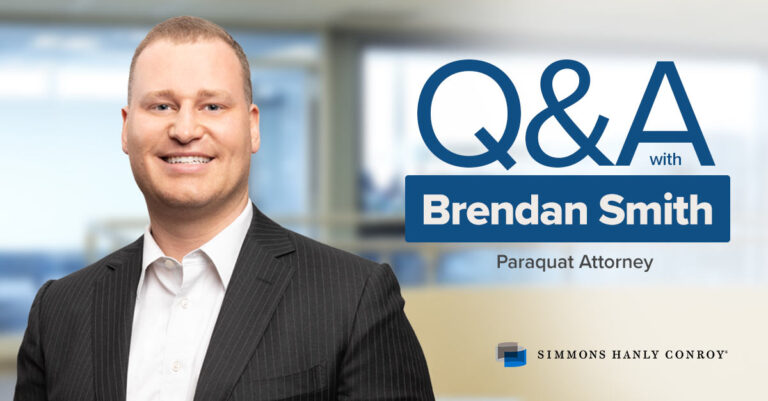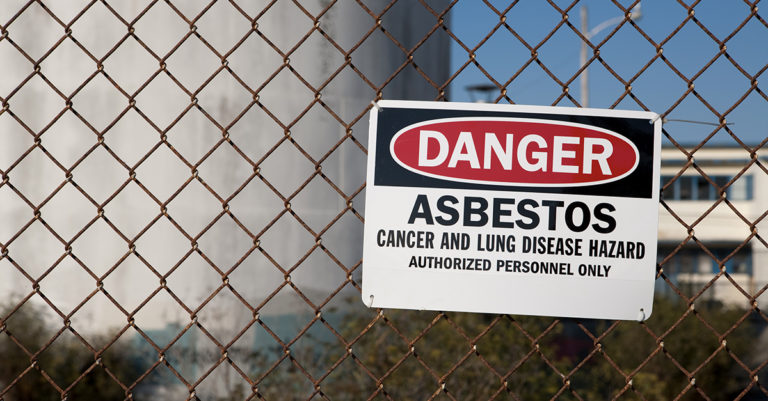In a decision likely to be cited in many toxic tort cases, the Delaware Superior Court for New Castle County denied a motion in limine, by the DaimlerChrysler Corp., to exclude expert testimony that working with automotive friction products causes asbestosis, lung cancer and mesothelioma.
Judge Joseph R. Slights III wrote the May 9 ruling on what is often called a Daubert motion, in which he emphasized that it is not the court’s job to reach conclusions on the merits of the science of one expert witness over that of another, but solely to decide whether the science is pertinent and that the experts’ conclusions were reached using sound methodology.
“The Court finds plaintiffs’ medical and scientific evidence that exposure to friction products increases the risk of contracting an asbestos-related disease is sufficiently reliable to pass through the Daubert filter, and that the proper manner by which to challenge the plaintiffs’ theories, and to expose their weaknesses, is through vigorous cross-examination of the plaintiffs’ expert witnesses,” Slights wrote.
Ten days after the motion was denied, DaimlerChrysler filed an interlocutory appeal in In Re: Asbestos Litigation.
“It hasn’t been certified yet, but it’s moving in that direction,” said Michael Palese, a spokesman for DaimlerChrysler, who added, “There is no scientific evidence that links asbestos-related disease to automotive products. There are studies that clearly show there is not. The argument we are essentially making is that there are other exposures more relevant.”
The dispute hinges on the definition of scientific evidence.
“In the Court’s mind, the fact question boiled down to this: in the face of what Chrysler has characterized as settled epidemiological evidence that exposure to automotive friction products does not increase the risk of disease, can the plaintiffs’ non-epidemiology experts reach reliable conclusions to the contrary and stay true to the scientific method? Stated differently, when considering the link between toxic exposure and human disease, does epidemiological evidence, when it exists, trump all other science for purposes of testing the reliability of a scientific hypothesis and assessing the reliability of a scientific conclusion? Not surprisingly, Chrysler’s evidence said yes; plaintiffs’ evidence said no.”
At the motion hearings DaimlerChrysler argued on behalf of a group of defendants including Owens-Illinois Inc. The friction products are auto brakes and clutches. Epidemiological studies involve periods of data collection followed by statistical analysis.
The label “Daubert motion” comes from a 1993 case, Daubert v. Merrill Dow Pharmaceuticals, in which the U.S. Supreme Court said courts should act as “gatekeepers” in order to keep junk science out of litigation.
The high court developed a two-pronged test to establish the admissibility of expert testimony: One was relevancy — whether the expert’s facts “fit” the case — and the other was reliability, meaning that a court should assess the factors used to give legitimacy to conclusions, such as peer review and empirical testing.
Since that time courts nationwide have split as to the definition of reliability.
“In recent years there has been a trend. … Epidemiology has become the gold standard,” said William A. Kohlburn of Simmons Hanly Conroy in East Alton, Ill., the lead counsel who argued the case for one group of plaintiffs. “If the plaintiffs’ foes have some contradicting epidemiology, it’s game over for plaintiffs. This [Superior Court opinion] says that’s not the case. There is no type of science, even epidemiology, that trumps everything else. … Returning to those roots has a big impact on toxic torts in general.”
Jean M. Eggen, a professor of law at Widener University School of Law in Wilmington who has written extensively on Daubert issues, said the opinion has the potential for far-reaching implications if it is part of a trend.
“I think the most significant thing for me is the statement that epidemiological evidence is not required as a matter of law. That is a matter of a lot of debate. The judge mentioned that the courts have split. … My personal view is that nothing in Daubert requires epidemiological evidence. The court may prefer it, but that is very different than requiring it.”
Slights’ opinion considered each expert in turn, and examined their credentials and evidence. Experts for the plaintiffs offered case studies and differential diagnoses and one Australian epidemiological study that was acknowledged to be flawed.
In fact, one expert for the plaintiffs, Richard A. Lemen Ph.D., “believes that ‘the reality of the situation’ with respect to the association between friction products and asbestos diseases is that the epidemiology is ‘equivocal’ and that other sources of scientific data offer meaningful guidance on the question,” the opinion said.
Lemen went on to cast doubt on the epidemiological evidence of DaimlerChrysler’s expert, Michael Goodman, M.D., the opinion recounted.
“Dr. Lemen was critical of each of the epidemiological studies relied upon by Dr. Goodman and, as to each study, he identified either structural defects or ‘confounders’ in the study that weakened the reliability of the study’s conclusions,” the opinion said. “Moreover, according to Dr. Lemen, epidemiology is less informative when the disease under study is rare,” as is mesothelioma. Small samples can render statistical analysis meaningless.
Among many past cases bearing on this issue, Slights discussed the 2004 Superior Court case Long v. Weider Nutrition Group Inc. because both sides brought the case into their arguments.
The recent opinion quoted Long as saying. “‘Although there is a split of authority, other jurisdictions have found that epidemiological studies are not necessary as a threshold for admitting an expert’s opinion on causation.’”
The passage from Long also said that to limit evidence in this manner would be a “‘rigid proposition. … If a properly qualified medical expert performs a reliable differential diagnosis through which, to a reasonable degree of medical certainty, all other possible causes of the victims’ condition can be eliminated, leaving only the toxic substance as the cause, a causation opinion based on that differential diagnosis should be admitted.’”
The plaintiffs cited Long for obvious reasons. DaimlerChrysler focused on the phrase in Long that says a differential diagnosis can be admitted only if all other possible causes are ruled out, Slights explained.
“Both parties have accurately quoted the opinion,” Slights wrote. “Nevertheless, the Court reads Long as readily supporting the admission of plaintiffs’ proffered expert testimony in this case. This is so not only because Long recognizes that epidemiology is not required, as a matter of law, to establish general causation in every case, but also because Chrysler’s interpretation of Long is entirely inconsistent with Delaware’s settled law on proximate cause.”
Eggen said she thought Slights’ opinion was well presented and that the court clearly understood the issues and its own limitations.
“It reflects the spirit of the Daubert case, that these battles of experts should be resolved by juries,” she said.
As far as the appeal is concerned, Eggen noted that in the 1999 case M.G. Bancorporation Inc. v. LeBeau, the Delaware Supreme Court appeared to very explicitly adopt Daubert and two other U.S. Supreme Court cases: 1997’s General Electric v. Joiner and 1999’s Kumho Tire Co. Ltd. v Carmichael.
“Those cases are sort of a trio that travel together,” Eggen said, explaining that M.G. Bancorporation indicates how the federal rules of evidence work in Delaware.
“The reason I think this is important is that in the Joiner case, the standard of review is abuse of discretion in these admissibility hearings, and if they use that as the standard, it is very hard to overturn,” Eggen said.
Local firms or offices involved in the case were Bifferato Biden Gentilotti & Balick and Jacobs & Crumplar for the plaintiffs, and Potter Anderson & Corroon and McCarter & English for the defendants.




